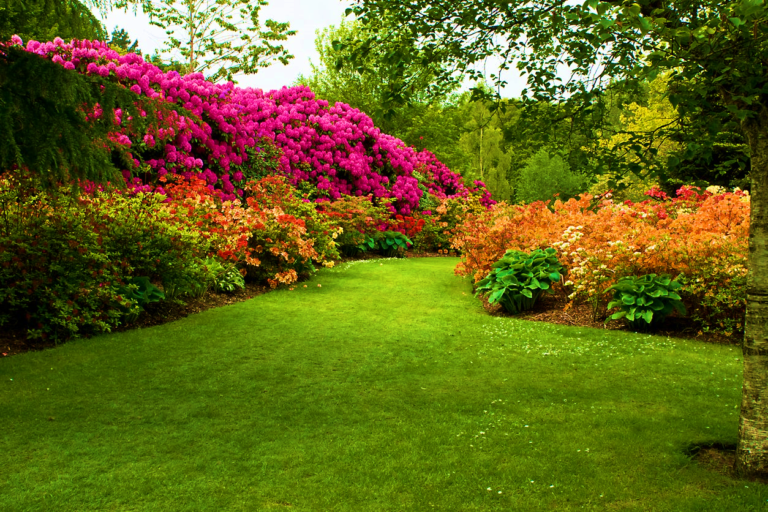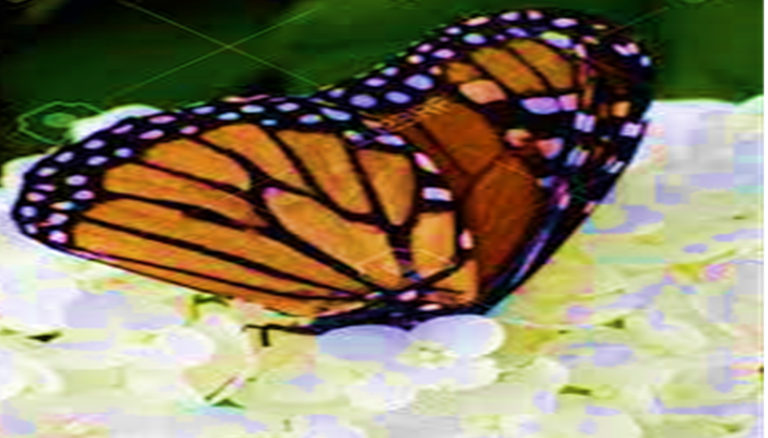Are Japanese Beetles Eating Hydrangeas? An Expert’s Guide
Hydrangeas, with their vibrant blooms and lush foliage, are a beloved addition to many gardens around the world. These ornamental plants add beauty and charm to landscapes, but they also face challenges from various pests. One such pest that has garnered attention in recent years is the Japanese beetle (Popillia japonica). This comprehensive article will delve into the intriguing world of Japanese beetles, their affinity for hydrangeas, and practical strategies to protect your prized plants from their voracious appetite.
Japanese Beetles:

The Japanese beetle, native to Japan, was accidentally introduced to the United States in the early 1900s. Since then, it has spread across North America, becoming a significant pest for various plant species, including hydrangeas. These metallic green and copper-colored beetles are known for their striking appearance, but their impact on plants can be detrimental.
Feeding Habits of Japanese Beetles
Japanese beetles are notorious for their insatiable appetite. Adult beetles feed on the leaves, flowers, and fruit of a wide range of plants, causing severe damage. Hydrangeas are among the plants vulnerable to their feeding habits. These pests consume the soft tissue between the veins of hydrangea leaves, giving the leaves a skeletonized appearance. Furthermore, they can devour flower petals and even chew on the stems, weakening the plant’s overall health.
Hydrangeas: A Preferred Buffet for Japanese Beetles

Hydrangeas possess characteristics that make them particularly appealing to Japanese beetles. Their lush foliage and colorful blooms attract these pests, making hydrangeas a prime target in infested areas. The softness of hydrangea leaves and petals also makes them easy for beetles to consume. Understanding why Japanese beetles find hydrangeas irresistible is crucial to devising effective strategies for protection.
Impact of Japanese Beetle Feeding on Hydrangeas
The consequences of Japanese beetle feeding on hydrangeas extend beyond aesthetics. Plants weakened by constant feeding become more susceptible to diseases and other stressors. Additionally, the damage inflicted by these beetles can reduce the overall vitality of hydrangeas, leading to decreased growth and diminished flowering. Addressing this impact is essential for maintaining the health and beauty of hydrangea plants.
Preventive Measures: Protecting Hydrangeas from Japanese Beetles

“Protecting Hydrangeas from Japanese Beetles” refers to the practice of safeguarding hydrangea plants from the damage caused by Japanese beetles. Japanese beetles are a common type of beetle known for their voracious appetite and ability to devastate a wide range of plants, including ornamental plants like hydrangeas.
Hydrangeas are popular flowering shrubs that are valued for their attractive blooms and lush foliage. However, they can be vulnerable to Japanese beetle infestations. These beetles feed on the leaves, flowers, and even the fruit of the hydrangea plants, often causing significant defoliation and weakening the overall health of the plant.
Physical Barriers:
Creating physical barriers, such as placing mesh netting over plants, can deter Japanese beetles from reaching hydrangeas. However, this method may need consistent monitoring to ensure that the net remains effective.
Companion Planting:
Some plants are known to repel Japanese beetles. Strategically planting these repellent species around hydrangeas can help keep the beetles at bay. Marigolds, garlic, and chives are examples of companion plants that have been effective in deterring these pests.
Handpicking:
Handpicking Japanese beetles from your hydrangea plants is labor-intensive but effective, especially for smaller gardens. Placing a bucket of soapy water beneath the plants and gently shaking them can cause the beetles to fall into the water and drown.
Biological Control:
Introducing natural predators of Japanese beetles, such as parasitic wasps and nematodes, can help control their population. This environmentally friendly approach can lead to a more balanced ecosystem in your garden.
Chemical Control:
In cases of severe infestation, chemical control methods like insecticides can be considered. However, it’s essential to use these products with caution, following instructions carefully to minimize harm to non-target insects and the environment.
Gardeners and horticulturists have developed a range of strategies to safeguard hydrangeas from the ravages of Japanese beetles. These preventive measures can be both proactive and reactive, offering different levels of protection based on your garden’s needs.
Cultural Practices: Maintaining Healthy Hydrangeas
Keeping hydrangeas healthy can reduce their susceptibility to Japanese beetle damage. Implementing proper cultural practices is an essential aspect of integrated pest management:
1. Regular Pruning:
Pruning hydrangeas to remove dead or weak branches can enhance their overall health. Well-maintained plants are better equipped to withstand stress from pests.
2. Adequate Watering:
Hydrangeas require consistent watering, especially during dry periods. Proper hydration ensures that plants can recover from stressors more effectively.
3. Fertilization:
Applying balanced fertilizers can provide hydrangeas with the nutrients they need to thrive. Healthy plants are better equipped to resist pest attacks.
Home Treatment
The approach to managing Japanese beetles will differ based on the extent of the infestation. When their numbers are limited, a simple remedy involves gently tapping them into containers filled with soapy water to eliminate them. Certain gardeners opt for Neem oil as a repellent, applying it before the beetles start damaging plants. However, this method doesn’t gain approval from experts in tree and shrub care due to its limited effectiveness. Although Japanese Beetle traps exist, experts don’t recommend them, as they might inadvertently attract more beetles instead of deterring them. As for preventive measures, no spray exists; only direct-contact insecticides are available.
Bio Advanced’s All-in-One Rose & Flower Care serves as a comprehensive solution for managing adult Japanese Beetles on Roses and various other flowering shrubs and perennials. You should apply this product every six weeks. Not only does it assist in controlling Japanese Beetles, but it also functions as a preventative measure against other insects and diseases while providing fertilization benefits.
Conveniently, you can find this treatment in a concentrated form, which you mix with water and administer to the plant’s root zone. It’s important to exercise caution by avoiding contact with leaves and blossoms, as these actions could negatively impact essential pollinators like bees.
Remember to thoroughly peruse the chemical label in its entirety for precise directions and safety guidelines. Prevent direct interaction with the skin and eyes. In general, during the timeframe specified on the label, it’s advisable to keep both pets and humans away from the treated area.
Always prioritize safety and adherence to instructions when using such products.
Conclusion
The presence of Japanese beetles can pose a significant threat to the health and beauty of hydrangeas. Their voracious feeding habits can lead to widespread damage, impacting the vitality of these beloved plants. By understanding the behavior of Japanese beetles and implementing a combination of preventive measures and cultural practices, gardeners can effectively protect their hydrangeas from these invasive pests.
In the realm of gardening, knowledge truly is power. Armed with information about Japanese beetles and their interaction with hydrangeas, garden enthusiasts can cultivate thriving gardens that showcase the stunning beauty of these ornamental plants. By fostering a balanced ecosystem and implementing thoughtful strategies, we can ensure that our hydrangeas remain vibrant and healthy, free from the threat of Japanese beetle infestations.
FAQ’S
Begonias, encompassing varieties like the ‘Dragon Wing’ types, showcase leaves and flowers with increased thickness as a group. This characteristic provides them with a resilience that Japanese beetles find unappealing.
Fully-grown Japanese beetles consume the leaves, flowers, and fruits of a wide array of plants. Among their favored choices are roses, grapes, lindens, apples, crabapples, cherries, plums, and associated trees, as well as birch, elm, raspberries, currants, basil, Virginia creepers, hollyhocks, marigolds, corn silks, and soybeans.
Neem Oil
An alternative approach to combat involves employing neem oil. Neem oil is available in spray form, offering considerable effectiveness. When adult beetles ingest neem oil, they transmit it to their eggs, leading to the demise of the larvae even before they mature into adults.






